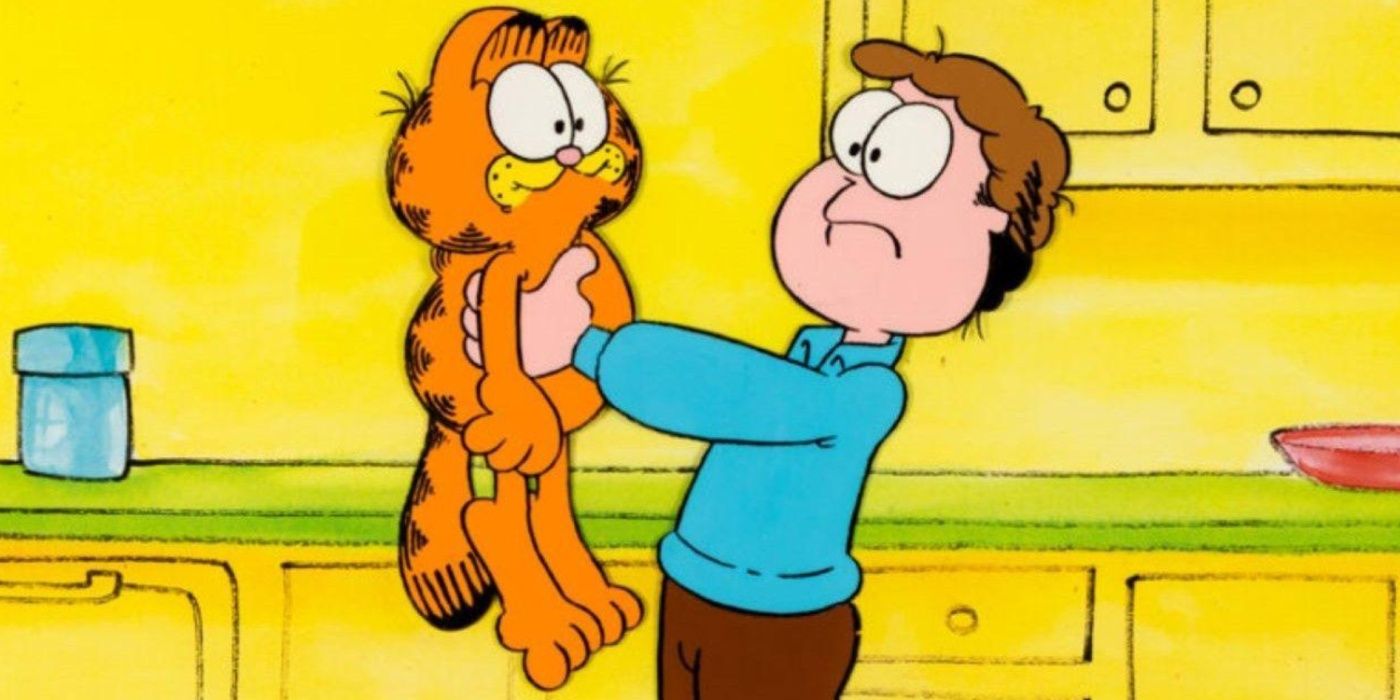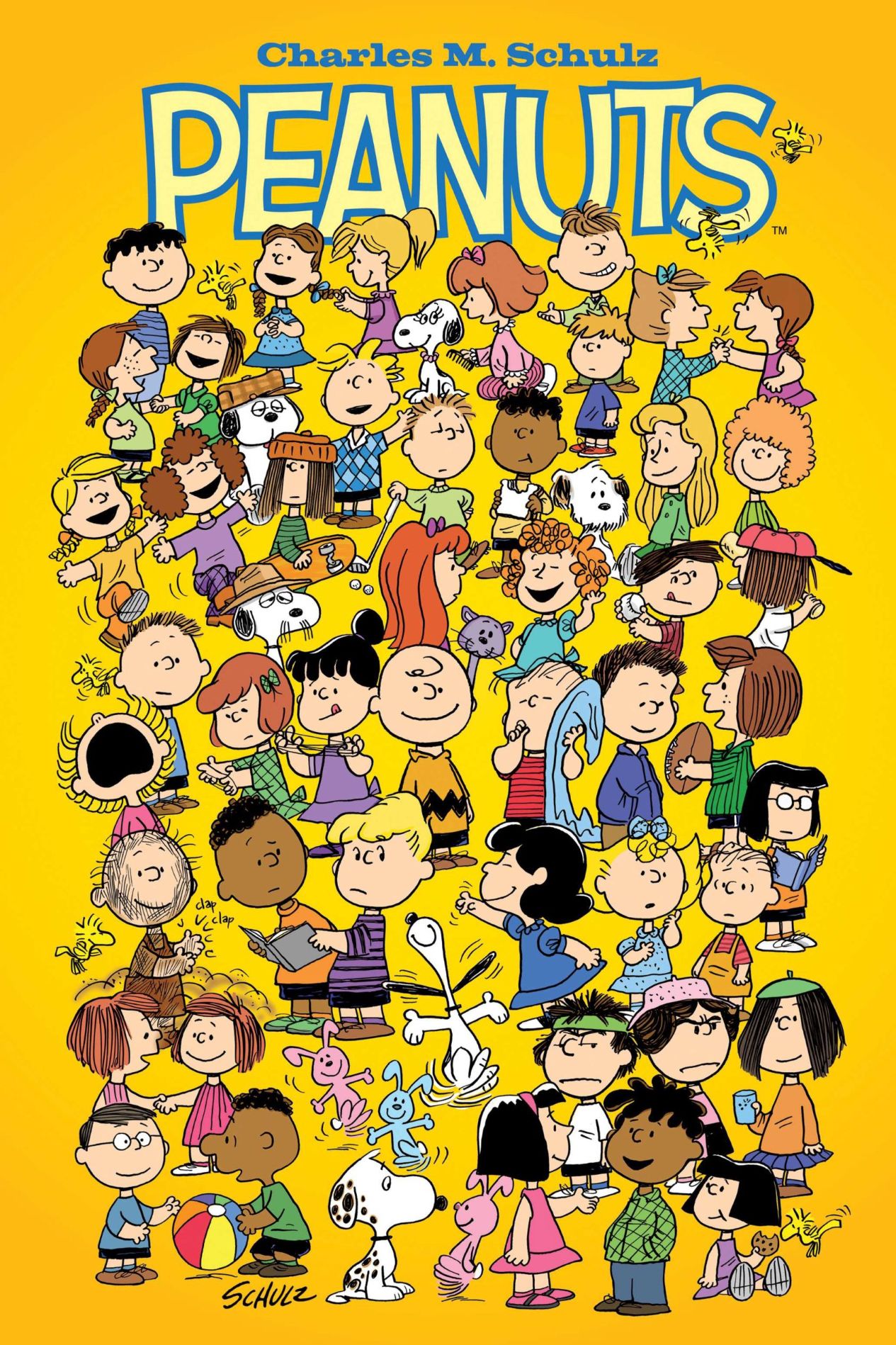According to his biographer, Peanuts creator Charles Schulz was fiercely competitive – to the point where he considered Garfield artist Jim Davis to be something of an arch-rival, even as he helped shape the younger illustrator’s comic in ways that would help define it. A closer look at the relationship between Schulz and Davis offers fascinating insight into how two of the most prolific creators in American pop culture coexisted.
In Schulz and Peanuts: A Biography by David Michaelis, the author provides readers with a detailed account of how Charles Schulz felt about Garfield when the latter strip entered national syndication in 1978.
Michaelis’ depiction of Schulz is unflinching, in that it doesn’t seek to lionize the late Peanuts creator. The description of his personal and professional position on Garfield – in contrast to how Jim Davis is described as feeling about the older cartoonist – is one of many details in the book that highlight Schulz’ nature as a complex, often intense, and always highly driven artist.

Related
“If You Force Something, Readers Will Pick Up on That”: Garfield Creator Jim Davis Disagrees with Pretty Much Every Author’s Favorite Writing Advice
Most authors say that writing every day is key to their success; one stand-out exception is Garfield creator Jim Davis, who prioritized inspiration.
Charles Schulz Considered Garfield To Be Peanuts’ Number One Competitor
A One-Sided Rivalry
As befitting a biography of an influential cultural figure, whose career spanned half the 20th century, David Michaelis’ Schulz and Peanuts is appropriately dense, aiming to be an exhaustive, definitive account of the artist’s life and career. Of the many humanizing details contained in the book, one that stands out is the description of Schulz’ competitiveness. References to the artist’s competitive nature are littered throughout MIchaelis’ book, but what is perhaps the stand-out example comes during the account of how Charles Schulz felt about Garfield.
The way it is described in Schulz and Peanuts, once Charles Schulz found himself at the top of the comic industry, he never had any intention of ceding that position to any other creator. As David Michaelis wrote, quoting Schulz directly:
[Schulz] had to get the better of everyone else on the comics page every day. “In the thing that I do best, which is drawing a comic strip, it is important to me that I win.”
For decades, it was never in question that Charles Schulz would “win”; Peanuts was the unequivocal top of the comic strip food chain. That was, until Garfield’s debut in the late 1970s. From Schulz and Peanuts:
Garfield let loose the insecurities that lay behind Schulz’s competitiveness. “[Schulz] had been king of the mountain and suddenly he had a competitor,” recalled on syndicate executive.
Interestingly, the book makes it clear that, as real as Garfield’s success was, the competition between Jim Davis’ strip and Peanuts was predominantly in Charles Schulz’ mind.
As described in Schulz and Peanuts, Jim Davis’ side of their dynamic was very different:
To Davis, meanwhile, Schulz was a fatherly presence, and an artistic conscience at the drawing board – “kind of like having Dad there,” said Davis.
Davis admired Schulz, and sought his council as they became peers; his biography describes Schulz as being “stingy” with his support. In any case, the ways he did help the younger creator, and the lessons he imparted through his success, were essential to making Garfield a worldwide phenomenon throughout the 1980s and ’90s. Still, Schulz and Peanuts also noted that Schulz had his share of unkind words about Jim Davis’ strip, at least in private.
Charles Schulz Was Critical Of Jim Davis’ Sense Of Humor
Dissecting The Peanuts’ Artist’s Harsh Words
One of the most striking things about Schulz and Peanuts’ account Charles Schulz and Jim Davis’ relationship is a passage in which the author dips into Schulz’ perspective for a moment, offering his biting dismissal of Garfield:
As a comic strip, Garfield also had a much narrower range than Peanuts; whereas Schulz swung between the intellectual and the warm and cuddly, Jim Davis was uniformly middlebrow. The humor of Garfield had no concealing subtleties; it was plainly aggressive, with a clear edge of malice. Garfield took no consideration of real human pain; Davis’s character Jon was so obtuse as not to register his multiple rejections, so no tragedy lay in his predictably endless humiliations at the hands of his dates.
This is just one example of something that comes up repeatedly in the artist’s biography: Charles Schulz was highly critical of other artists. In effect, he considered himself an authority in the medium, and judged every other comic strip by the standard he set himself.
Further expounding on how Schulz really felt about Garfield, biographer David Michaelis wrote:
Above all, the drawing was crude, empty; Schulz took every opportunity in private to belittle Davis as a cartoonist. Davis’s smug cat celebrated laziness and cynicism, and [Schulz] loathed it: Garfield, he often said in private, was the “ugliest, most insulting, and vicious” character he had ever seen.
Here, readers are given the sense that Schulz may have been prone to hyperbole – at least, when it came to a perceived rival. In other words, Schulz seemed to be both mystified and mortified by the success of Garfield, if for no other reason than he considered it too significant of a departure from his own style. Through all of this, a picture of Charles Schulz as a complicated individual emerges, throwing into stark relief the dedicated simplicity of Peanuts.
To whatever degree it was warranted, or otherwise, Charles Schulz’ criticism of Garfield stemmed from his relentless drive to make Peanuts the best. While this led him to scrutinize – and privately savage – Jim Davis’ work, there is also the positive dimension of competition. Peanuts continued publication until the year 2000, in an increasingly competitive market that soon came to be filled with strips such as Calvin and Hobbes, and Gary Larson’s Far Side. Had Schulz not been challenged by these up-and-comers, Peanuts may not have remained as vital as it did through its final decades.
Whatever His Personal Opinion, Peanuts’ Creator Helped Make Garfield A Success
Charles Schulz’ Influence On Garfield
Ironically, in spite of his seemingly intense disregard for Garfield, and his reticence at the thought of Peanuts being supplanted as the top comic strip in the industry, Charles Schulz ultimately played a pivotal role in the long-term success of Jim Davis’ comic. Schulz had both a direct and an indirect effect on helping Garfield ascend to Peanuts’ level of commercial and critical success. As noted in Schulz and Peanuts:
As time went on, Davis ever more consciously took more than Schulz’s artistic success as his model—the Peanuts licensing program had become “a template that I could apply to Garfield.”
Indeed, in time, Garfield merchandise would go on to surpass Peanuts, becoming a billion-dollar industry worldwide.
By far, though, Schulz’ most important contribution to Garfield’s success was helping to redesign Garfield himself – specifically, his feet, in order to allow the character greater mobility. This fundamental change was key to Garfield’s long-term sustainability, opening up the range of movement for the character, and therefore, a wide spectrum of jokes and comedic situations that he hadn’t been capable of before. As harshly as Charles Schulz criticized Jim Davis’ work in private, he did provide crucial guidance that helped define Garfield’s legacy.
Though their “rivalry” might have been one-sided, there nevertheless was a real competitive competition between Jim Davis and Charles Schulz – one that can be argued made both of them stronger. Garfield and Peanuts share more qualities than Schulz might have wanted to admit, especially early in Garfield’s publication, but their differences also become more evident upon spending more time with both strips. Garfield and Peanuts are essential pieces of pop culture, and understanding the interpersonal dynamic of their creators adds a deeper layer to fans’ understanding of both comics.
Source: Schulz and Peanuts: A Biography
Garfield
Garfield is the central character in Jim Davis’s comic strip, which officially began in 1978 under the same name. Garfield is an orange tabby cat with a love of lasagna and a disdain for Mondays. He tends to torment his owner and dog while trying to secure more food – and quiet.

Peanuts
Created by Charles M. Schulz, Peanuts is a multimedia franchise that began as a comic strip in the 1950s and eventually expanded to include films and a television series. Peanuts follows the daily adventures of the Peanuts gang, with Charlie Brown and his dog Snoopy at the center of them. Aside from the film released in 2015, the franchise also has several Holiday specials that air regularly on U.S. Television during their appropriate seasons.





